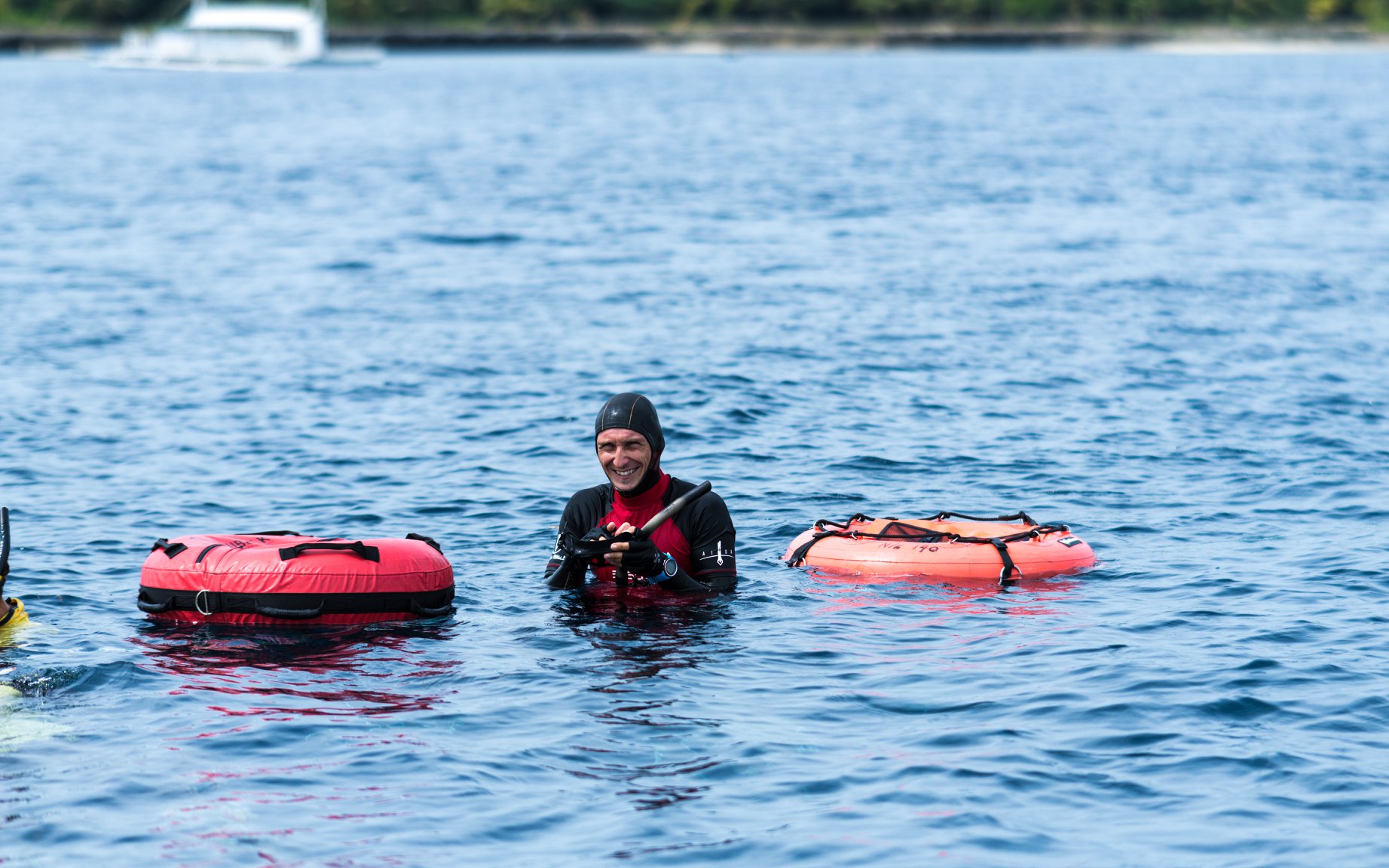For those who will join us for the first time, we would like share this small article to provide an overview of our competition set up. We will explain how it works and why it is a bit out of the ordinary.
We are happy to say that out of the currently 80 registered athletes, 39 are returning athletes who already competed at the 2018 edition of the event. The structure and set up will basically be the same again this year, so everything will be familiar for the returning divers.

Drift Diving
As underwater currents are present across almost all deeper areas of South East Asia, freediving while drifting is becoming a more and more popular practice to deal with Neptune’s wrath. Training while drifting must be planned carefully.
Recommendations always include to have a boat on standby with an experienced operator, to know the bottom topography and depth, and most of all to keep plenty of distance to anything that could get in the way while diving – mainly the reef or sea floor.
If we follow these guidelines then drift diving can create perfect diving conditions in even strong currents.
How does it work for a competition set up?
Unless athletes can be directly supervised by the safety divers all the way (possible for shallow events), it is mandatory in AIDA competitions to set up a counterweight system. The counter weight system should allow to haul the main dive line up with a speed of minimum 1m/s.
The classic counterweight set up is usually a purpose built platform (seen at events like Vertical Blue or Blue Element) or the counterweight installed across a boat or even a large barge as we have seen in previous AIDA World Championships.
What all of those competition set ups have in common: They are stationary. That means the platform or boat is either anchored or attached to a mooring line. We have organized competitions like that here in Panglao, which forced us to adhere to the time windows of slack tide when very little water movement makes it possible to dive. Unfortunately those time windows greatly limit the amount of official dives that can be done safely within a day and in general add a great amount of uncertainty when it comes to diving conditions.
Drifting with a platform?
So next obvious question would be: Why not combine the advantage of drift diving and the set up of a platform and just let everything drift freely in deep water? There is one major problem here:
Diver, rope and everything that happens below the surface are affected and moved by currents, but whatever floats on the surface is mainly affected by wind and resulting waves. Drifting with buoys works well because they are light and create only very little resistance on the surface. However a boat or platform create a lot more drag if exposed to wind or waves and might even pull the diving lines in opposing directions to the current.
We have organized competitions this way, but it works only in the complete absence of wind and waves. In 2017 Goran Čolak set a Croatian National Record of 115m CWT at one of our events, which was with a drifting platform in perfect conditions.

Freedive Panglao Counterweigt system
In 2017 Austrian Freediver and Equipment Specialist Markus Helm developed an in-water Counterweight System for Freedive Panglao. We wanted to create a set up that is more independent from weather and currents that still creates a safe environment for a competition. Buoys are carrying the system which allows it to drift easily. Other events in Egypt as well as competitions in Hawaii has previously used this kind of counterweight system.
Initially met with some skepticism by some athletes, the Asian Freediving Cup 2018 was proof that the set up, even though simple can provide absolutely current-free deep diving. Many athletes also enjoyed the casual atmosphere of a buoy set up, as it is very similar to what a lot of divers are used to from training.

From left: Dongha Kim, Rebecca Lo, Stefan Randig, John Folkvord, Air Yang, and Mariko Kaji

Disadvantages
For us as organizers the set up comes with mainly two disadvantages:
- Staff dry area
No dry are a means we will need more safety divers to make sure everyone is well rested. We need to be able to provide safety for 5-6 hours of competition dives a day.
For athletes there will be boat on standby very close to the competition zone which serves as dry zone. An additional boat is on standby with members of the medic team for quick transportation back to shore if needed.
- Media coverage
Covering the event on Social Media through a live feed is more of a challenge. This means that any portable devices must be waterproof.
All in all for us the advantages of the drifting Counterweight System definitely outweigh the disadvantages. We are confident to offer world class diving conditions once again in 2019!
AFC 2019 – Competition Set Up Summary:
- 2 Official Set Ups
- Shuttle Boats from shore every 20min
- Competition Zones approximately 500m from shore
- Depth at Competition Zone: +150m
- Warm up Zone: 2 buoys per set up, set to 40m, supervised
- Distance between Official Line and Counterweight: 6m
- Official Line bottom weight: 15kg
- Counterweight: 35kg
- Velcro Tags (soft part)
- Candy Cane with Tennis Ball halfway (1m to plate)
- Both set ups will be re-positioned between sets
(Expected distance drifted during one Set of 20 divers: 100-800m)

We hope that gives some overview of the Competition Set Up. Please don’t hesitate to contact us if you have any questions!
Stay tuned for next months article, on February 8th. We will post some useful tips and recommendations to make the Competition a more enjoyable experience!
All the best from the whole Freedive Panglao Team!
One Comment Add yours